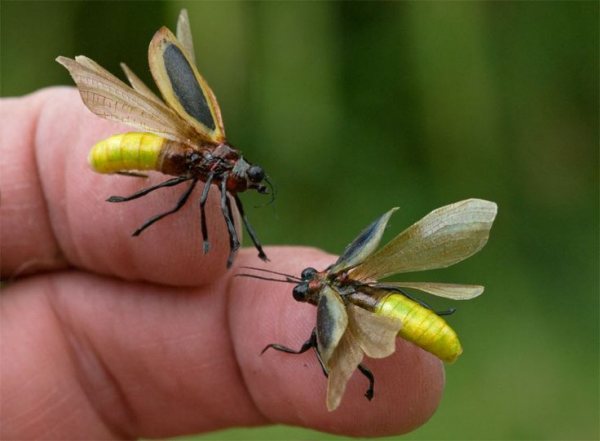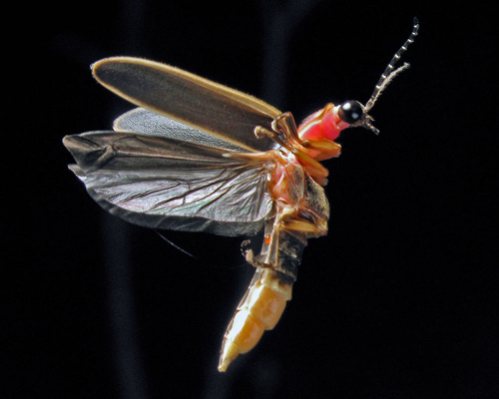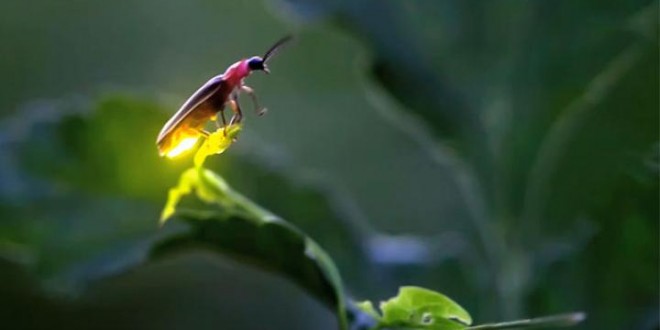Every year about this time I am reminded of one of the magical aspects of the universe in the form of a beetle that lights up – the lampyridae or as they are colloquially known, the firefly or lightning bug.
Who here doesn’t have fond childhood memories of racing out the door and chasing fireflies around the yard or neighborhood? Do you remember the silly childhood notion that if you captured enough and placed them in a jar, they could serve as a lantern? These beetles may be subtle in size, but massive in their ability to point back to our childhoods.
So late in each June, I start casually making it a point to peek out of the kitchen window to see if they’ve arrived. This year is rather special – it will make 40 years we’ve celebrated our friendship, so I made it a point this year to be especially attentive to their arrival.

This evening my old friends made their return, and being a curious lot I decided to find out the magic behind them. Have you ever wondered how the beetle lights up? What is that scientific process (bioluminescence) by which they pull this off? Why are their different colors? In fact, why do they do it at all?
The name lampyridae is a combination of Latin and Greek, lam means a marsh or bog – their favorite breeding ground, pyr means fire, and idae means family and is used in classification. One thing I found out fast, is that with a mind-boggling 2,000 species of fireflies there is no easy way to answer those questions. The variations are astounding – some fly, some don’t. Colors vary from red, to yellow to green. Some aren’t luminescent at all – though as larvae all fireflies glow and they are aptly called glow-worms. Most are nocturnal, some are diurnal or active during the day and get their sleep at night. Most have mouths, but the European version doesn’t. Some stick around all year around, like the ones found in the Philippines. They are found all over the world, everywhere except extremely cold places like the North Pole, Antarctica and extreme north Canada and Siberia.
The glow is a result of the drawing in of oxygen and mixing it with an enzyme called luciferase. The most interesting facts I discovered were that fireflies don’t die when the weather changes – they actually hibernate through Winter, often by hiding underground. In some cases, they’ve been found to hibernate for years. While they seem “cute” the firefly is a predator, they will gladly attack worms, snails, larvae and any bug that is fluttering about if there isn’t any pollen to eat.

Also, not “cute” is that they can be poisonous to some vertebrata if eaten because of what is called a steroid pyrone – similar to the compound found in poisonous toads. As glowworms or in their larvae stage they attack by injecting prey with a digestive, numbing fluid. The same substance, luciferase, that contributes to the complicated process that cause the bioluminescence is used within forensics to detect blood which can’t be seen by the naked eye. In medicine it is used to detect metabolites like magnesium.
So what is behind the abdominal glow? If you guessed to warn predators and to attract mates, you would be half right – it’s used in courtship. As larvae the glow isn’t used to warn predators, but the opposite: attract something to eat. Adult female fireflies bury the eggs underground in a cave they have burrowed. Then they spin a silk nest and lay snares also made of silk. If you are an insect you might see the glow as a snack and crawl right into one of these snares…and have the roles reversed.
Getting back to the courtship, it is the intermittent glow – its cadence, pattern and rhythm that arouses a mate. In some cases, like in Asian and one American species, hundreds will synchronize their glow patterns to really drive the men bananas. For you ladies with a mean streak and are curious whether the female eats the male after mating: you’ll be glad to know that the female Photuris fireflies – one of our own species – lures the males in using just the right glow pattern. The real cruelty here is that there is no mating – these femme fatales solely attract the men to eat them.
Poor sods.
I hope this stream of thought wasn’t too dull and I shed some light – pardon the pun – on these fascinating beetles. If it’s evening and you’re reading this, take a look out your window and see if they are visiting. See them in a, ahem, different light.
 New Bedford Guide Your Guide to New Bedford and South Coast, MA
New Bedford Guide Your Guide to New Bedford and South Coast, MA







